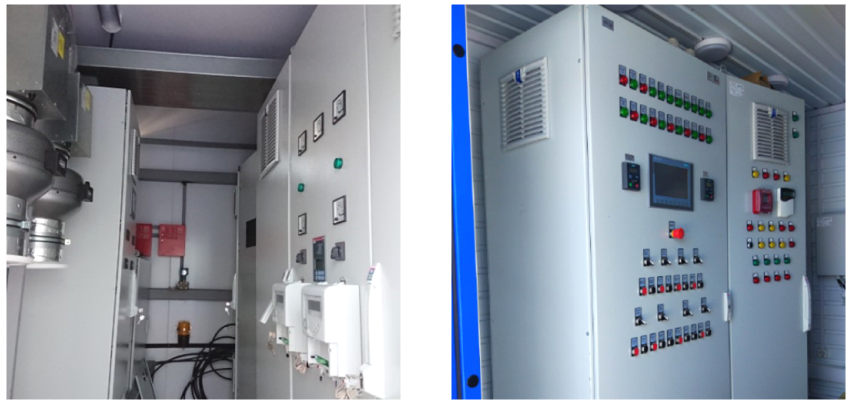
A hierarchical informational structure with the application of computers of different capacities is used for building advanced industrial automation systems (typically, APCS).
An APCS serves to generate control inputs for the controlled technological object.
The controlled technological object is a package of process equipment and implemented in it technological process of production of goods or energy according to the related guidelines and regulations.
At present, automated process control systems are implemented as follows:
- A one-tier (local) system, consisting of a PLC or a monoblock adjustable controller (MAC) that provide the indication and status of controlled or regulated process on the control panel.
- A two-tier (centralized) system, consisting of:
- Several PLC on the lower tier with interconnected sensors and actuators;
- One (or possibly several) workstations on the upper tier.
Main functions of APCS elements:
PLC:
- Acquisition of discrete signals from process equipment transducers
- Analog data digitizer (ADD) converting analog signals transmitted to the inputs
- Data scaling and digital filtering after ADD
- Obtained data processing according to the functional program
- Generation (as per the program) of discrete control signals and transmittal of these signals to actuators
- Digital-to-analog conversion (DAC) of output (information) data into output analog signals
- Transmission of control signals to the corresponding actuators
- Protection from the loss of operability, that may result from a processor hang, using a watchdog timer
- Equipment operability protection in case of temporary power outages (using a UPS source of sufficient capacity)
- Monitoring of sensors operability and measured values validity
- Indication of current and integral readings of measured values
- Supervisory signaling of the controlled process state
- Supervisory light and symbol signaling of the controller status,
- Configuration (parameters adjustment) via a PC plugged in a dedicated port
Transducers:
- Conversion of the measured values of temperature, pressure, displacement, etc. into a continuous or impulse (for PLC counters) electric signal.
Actuators:
- Conversion of electrical control continuous-time or impulse signals into a mechanical actuator motion, electronic control of current in power circuits, etc.
Lower-tier basic functions:
- Collection, electrical filtering, and analog-to-digital conversion of input signals from transducers
- Implementation of local automated process control systems in the scope of single-tier system PLC functions
- Implementation of preventive and emergency alarms
- Arrangement of a system of trips and interlocks
- Exchange of current data with the upper-tier CP requested by PC via Ethernet
Upper-tier basic functions:
- Visualization of the process status
- Current recording of process parameters
- Online analysis of equipment and process states
- Recording of operator activities, including the activities when alarm messages are received
- Archiving and long-term storage of process protocols values
- Implementation of “advice-giving system” algorithms
- Supervisory control
- Data base storage and keeping:
- Technological process parameters
- Critical process parameters of equipment
- Indications of technological process alarm conditions
- Composition of operators (their passwords) allowed to operate the system




